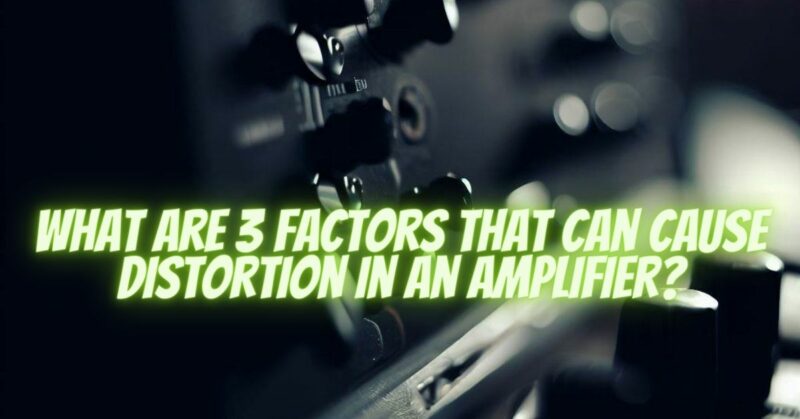Distortion is a key element in shaping the unique and expressive sound of an electric guitar. While distortion can be desirable in many musical contexts, it’s essential to understand the factors that contribute to distortion in guitar amplifiers. In this article, we will explore three primary factors that can cause distortion in an amplifier, shedding light on the mechanisms behind this beloved sonic effect.
- Gain and Overdrive:
One of the primary factors that induce distortion in guitar amplifiers is the intentional increase of gain or overdrive. Gain refers to the amplification of the guitar signal within the amplifier’s circuitry. As the gain is boosted, the signal becomes progressively saturated, resulting in distortion. This distortion can range from a mild overdrive that adds warmth and grit to a heavily saturated, high-gain tone favored in heavier genres of music. The level of gain applied to the signal is a fundamental factor in determining the degree and character of the resulting distortion.
- Power Amp Saturation:
The power amp section of a guitar amplifier also plays a significant role in producing distortion. As the amplified signal is sent to the power amp, it passes through additional gain stages and encounters increased voltage and current. When the power amp is pushed beyond its limits, it enters a state of saturation, causing the signal to distort. Power amp distortion often results in a thicker, more dynamic sound with enhanced sustain and harmonic content. The level of distortion introduced by power amp saturation can be influenced by the amplifier’s volume settings and the interaction between the power amp and the speaker.
- Speaker and Cabinet Characteristics:
The speakers and cabinets used in guitar amplifiers can contribute to the overall distortion characteristics. The speaker’s ability to handle power and reproduce sound plays a vital role in the tonal response of the amplifier. Speakers have different power ratings, frequency responses, and tonal characteristics. Some speakers are designed to enhance and accentuate distortion, while others prioritize clarity and clean tones. Additionally, the size and construction of the cabinet can impact the way sound resonates and interacts, influencing the overall distortion profile.
Conclusion:
Understanding the factors that contribute to distortion in guitar amplifiers empowers guitarists to explore and manipulate their desired tone. Increasing gain or overdrive, power amp saturation, and the choice of speakers and cabinets all play significant roles in generating distortion. By experimenting with these factors, guitarists can achieve a wide range of distortion tones, from subtle overdrive to full-blown high-gain madness. Remember, each amplifier is unique, and exploring these factors in combination with personal playing style and preferences will allow you to craft a signature sound that suits your musical expression.


